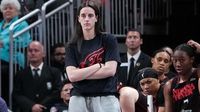As the WNBA regular season barrels toward its September 11 finale, the league finds itself in the throes of one of the most wide-open playoff races in recent memory. Only the Minnesota Lynx have officially punched their postseason ticket, while a crowded field of contenders and hopefuls jockey for position, home-court advantage, and—perhaps most crucially—a chance to make history in a season defined by resilience, shifting fortunes, and the ever-growing influence of live sports on streaming platforms.
According to Amagi’s Global FAST Report, released on August 21, 2025, nearly two-thirds of streamers now watch live sports on at least one streaming platform. That’s a seismic shift in how fans engage with basketball, and it’s not just a tech story—it’s reshaping the WNBA’s audience. Streaming accounted for a whopping 44.8 percent of U.S. television viewership in May 2025, per Nielsen Media Research, with platforms like YouTube, Netflix, and Amazon Prime Video all making aggressive moves for live sports rights. Prime Video, for example, is poised to start offering NBA games in just a few weeks, and YouTube has already locked down the NFL Sunday Ticket and a preseason NFL game.
This digital surge has a direct impact on the WNBA’s visibility. Amagi’s data reveals that sports made up a staggering 84 percent of all live programming on FAST (free, ad-supported streaming television) channels during the first quarter of 2025. The number of sports channels on FAST has more than doubled in the past eight months, leaping from 107 to 220. Cathy Rasenberger, co-Founder of Sports Studio, Inc., likens the moment to the early days of cable TV: “Live sports is fueling increased viewership and advertising on FAST, just as live sports on ESPN drove the early success of cable TV.” With FAST now commanding over 20 percent of all media viewership but only 8 percent of ad spending, the stage is set for a major advertising boom—one that the WNBA and its partners are eager to capitalize on.
But back on the hardwood, the playoff picture is anything but settled. The Minnesota Lynx, boasting a 17-1 home record (not counting the Commissioner's Cup final), have clinched a spot and are widely tipped to make a deep run. ESPN’s Michael Voepel predicts the Lynx could win the Finals in six games, though he cautions that “it’s more likely the Lynx will drop as many as three postseason games, the first of which we predict will come in the semifinals.” The Lynx’s only regular-season home loss came to Atlanta on July 27, a reminder that even the league’s elite aren’t invincible.
Meanwhile, the New York Liberty—second in the standings but just six games ahead of the tenth-place Washington Mystics—have been navigating choppy waters. Since Breanna Stewart was sidelined with a bone bruise on July 30, the Liberty have gone 5-7, briefly dropping to third behind Atlanta. Still, hope springs eternal: Stewart is targeting a return before her August 27 birthday, and with Jonquel Jones and Sabrina Ionescu in the fold, New York is poised for a late push. ESPN’s Alexa Philippou notes, “Without Stewart or Jonquel Jones, the Liberty have been vulnerable, but with both...they have proved time and again to be special.”
The Atlanta Dream have found a winning formula with Naz Hillmon in the starting lineup and Brittney Griner embracing a reserve role since her August 10 return. Hillmon’s insertion has given the Dream better floor balance, and Griner has thrived off the bench, averaging 11.3 points, 6.3 rebounds, and 1.8 blocks in just under 19 minutes per game over her past four outings. ESPN’s Dean Oliver found that Griner is among the five WNBA players most improved coming off the bench relative to her production as a starter. “Starting Hillmon always loomed as the endgame for Atlanta come playoff time,” writes Kevin Pelton. Griner’s earlier neck injury may have been a blessing in disguise, letting Atlanta experiment with new lineups ahead of the postseason.
Out west, the Las Vegas Aces are on a tear, riding an eight-game winning streak and sitting at 22-14, just behind the Phoenix Mercury’s 21-13. A’ja Wilson is putting up monster numbers—26.9 points and 13.1 rebounds per game during the streak—fueling the Aces’ late-season surge. But with both Atlanta and New York holding relatively forgiving schedules, Las Vegas will need some help to secure a top-three seed. “Games against the Dream and Lynx should be considered must-wins,” says Kendra Andrews.
The Phoenix Mercury, for their part, have gone 6-7 since July 16, losing every matchup in that span against top teams like New York, Atlanta, Minnesota, and Las Vegas. Still, there’s a sense that Phoenix is just now hitting its stride as its big three—Kahleah Copper, Satou Sabally, and Alyssa Thomas—have only played 14 games together this season. “Once the Mercury’s big three get more time alongside each other, they hope to overpower opponents with depth and endless offensive weapons,” Andrews adds.
Perhaps the most intriguing story is the Golden State Valkyries. In their inaugural season, the Valkyries sit just one game out of sixth place and are poised to become the first expansion team in WNBA history to make the playoffs in year one. The new 1-1-1 first-round format guarantees Golden State a home game, and their 10-7 record at the Chase Center has made “Ballhalla” a fortress. Yet, with a tough closing stretch against the Mercury, Liberty, and Lynx, the odds are stacked against a deep run. “They’ll likely face teams peaking at the right time, all with playoff experience,” says Andrews.
Elsewhere, the Seattle Storm have struggled in the clutch, losing nine games by five points or fewer and ranking ninth in effective field goal percentage in tight situations. Jewell Loyd’s offseason departure has left the Storm searching for late-game shot creation, and while Seattle’s recent close losses have been partly due to opponents’ hot shooting, there’s hope that regression to the mean could help them cling to a playoff spot.
In Indiana, the Fever are fighting through adversity. After a slew of injuries—including a season-ending MCL tear for Sophie Cunningham—Indiana pulled off a franchise-record 21-point comeback win over Connecticut last weekend. Caitlin Clark’s return remains crucial, but newcomers Odyssey Sims and Shey Peddy, along with stalwarts Kelsey Mitchell and Aliyah Boston, are expected to keep the Fever’s playoff hopes alive. “It won’t be easy, and it might go down to the wire, but we project the Fever to still find a way to eke into the playoffs,” says Philippou.
The Los Angeles Sparks, once left for dead, have gone 11-4 since a 6-14 start, thanks in part to improved health and the emergence of Julie Allemand, Cameron Brink, and Rae Burrell. Yet, sustaining their hot streak may prove difficult, especially as their playoff push has hit turbulence in recent games. “The Sparks are undoubtedly better than their record but probably not ready to threaten a top seed,” Pelton observes.
Finally, the Washington Mystics, led by rookies Sonia Citron and Kiki Iriafen and new coach Sydney Johnson, are unlikely to make the postseason but could play spoiler against top-four contenders like Las Vegas, Phoenix, and New York. “We expect the Mystics will miss the postseason for the second year in a row,” Voepel concludes, “but they could grab an unexpected win or two that impacts the standings.”
With streaming platforms transforming how fans watch and engage with the WNBA, and with the playoff race as unpredictable as ever, these final weeks promise drama, intrigue, and no shortage of surprises. As the postseason picture comes into focus, every game, every possession, and every streaming view counts. Buckle up—the WNBA’s regular season sprint is about to hit top speed.

